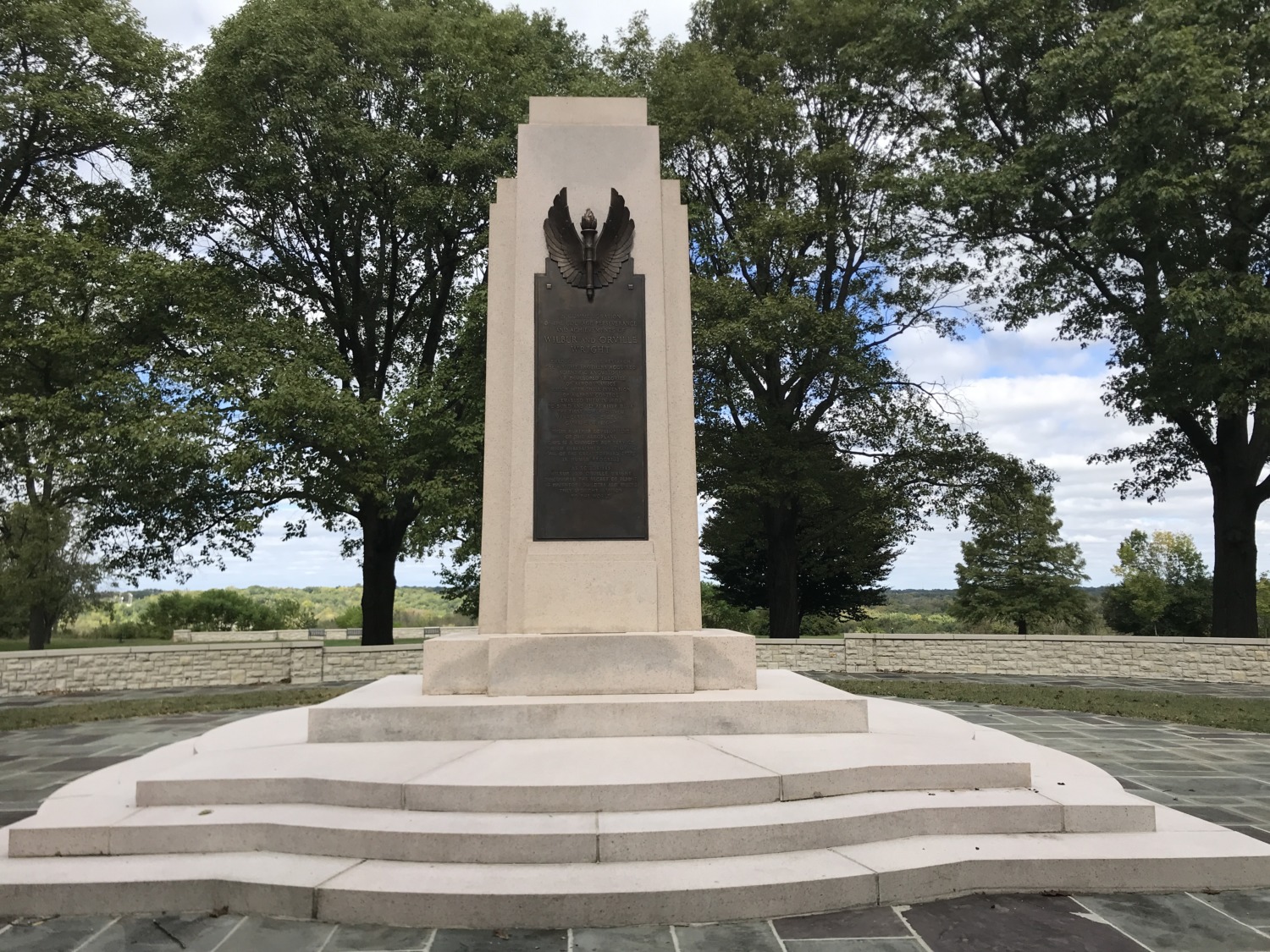The last National Park site we visited on our September trip was Huffman Prairie Flying Field in Dayton, Ohio. Dayton Aviation Heritage National Historical Park has five sites: the Wright brothers’ printing office, the bicycle shop, Wright mansion, Paul Laurence Dunbar’s home, and Huffman Prairie Flying Field. Each site requires driving to reach it, and we only visited the printing office, the bicycle shop, and the museum when we were there a few years ago.
We stopped by Huffman Prairie Flying Field on our way home from Wisconsin. It wasn’t a long stop, and we had a very specific reason for going there, which I will explain tomorrow. But it was good to see the airport and learn a little more of the Wright brothers’ story. We were especially impressed by the museum. It told a brief history of the Wright brothers, but went into more detail about aviation technology and the Wright brothers flying school.
When the Wright brothers returned to Dayton, after their historic first flights at Kitty Hawk in 1903, they looked for a suitable flying field closer to home. Dayton banker, Torrence Huffman allowed the brothers to use his pasture, which was located eight miles northeast of Dayton, rent-free. Here in 1904 and 1905, the Wright brothers mastered the principles of controlled, powered flight and developed the world’s first practical airplane.
In 1904, the brothers made 105 flights, totaling 49 minutes in the air with their 1904 Wright Flyer II. With this flying machine, they made the first turn and the first circle in the air. They also employed a starting derrick for the first time and Wilbur set a new distance record.
In 1905, the brothers developed the Wright Flyer III. This flying machine, which evolved throughout 1905, could bank, turn circles, and make figure-eights. On October 5, 1905, Wilbur piloted the plane for a world record of over 24 miles in 39 minutes. About two weeks later, the brothers ended their experiments for 1905 feeling that they now had a practical airplane that they could market.
The Wright brothers returned to Huffman Prairie Flying Field in 1910. The field was used as a testing ground and home to their exhibition team. They also ran their flying school at the field. The Wright brothers required each person who bought one of their airplanes to attend flying school. Others who wanted to fly also attended the school which was held at Huffman Prairie Flying Field. One pilot-in-training wrote about the undertaker who would watch flying practice every day. In addition, the field was used to test additional innovations the Wrights added to their airplanes.
The Wright Company ceased use of the flying field in 1916. Today, Huffman Prairie Flying Field is located on Wright-Patterson Air Force Base. It was designated a National Historic Landmark in 1990.
While we were at the Flying Field, we saw the memorial to the Wright brothers and the other pilots who flew at the field. We also admired the panoramic view at the overlook of the field and Wright-Patterson Air Force Base. It was an interesting visit and a good place to end our National Park visits for 2022.



